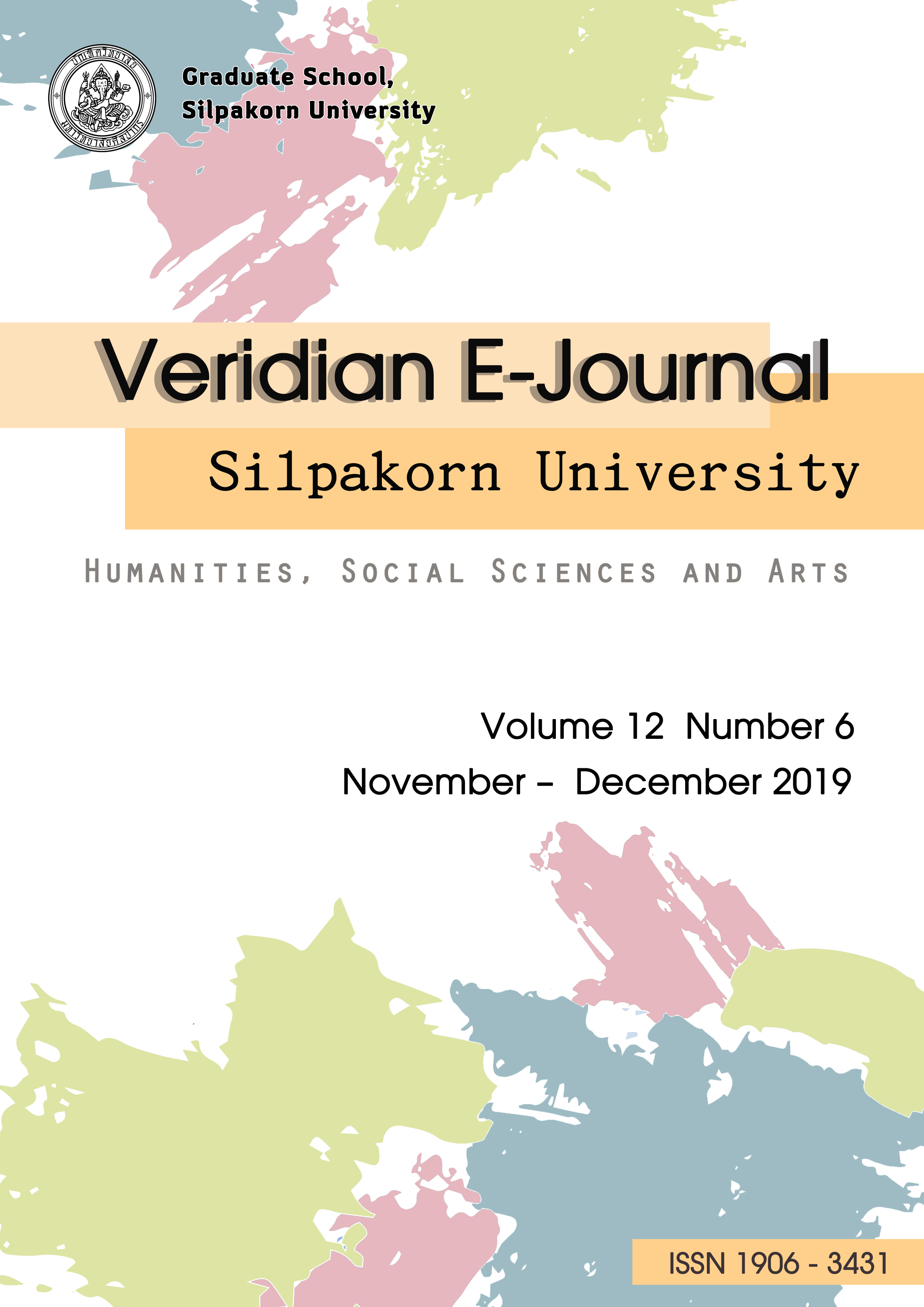มโนอุปลักษณ์แสดงภูตผีปีศาจหรือวิญญาณในภาษาไทย (Conceptual Metaphors of Ghost Devil or Spirit in Thai language)
Main Article Content
บทคัดย่อ
การศึกษานี้มีวัตถุประสงค์เพื่อวิเคราะห์ถ้อยคำที่เป็นมโนอุปลักษณ์แสดงภูตผีปีศาจหรือวิญญาณในภาษาไทยและวิเคราะห์ระบบมโนทัศน์ของผู้ใช้ภาษาไทยจากมโนอุปลักษณ์ตามแนวทางการศึกษาของทฤษฎีภาษาศาสตร์ปริชาน โดยศึกษาข้อมูลการใช้ภาษาไทยจากข้อความในตัวบท ได้แก่ นวนิยายตีพิมพ์ 10 เรื่อง ข่าวออนไลน์ 10 ข่าว เรื่องสั้นและวรรณกรรมเยาวชนชนิดละ 7 เรื่อง รวมทั้งการ์ตูนตีพิมพ์ 7 เรื่อง โดยข้อมูลอยู่ในรูปแบบเอกสารตีพิมพ์และออนไลน์ ผลการวิจัยพบว่าถ้อยคำที่เป็นมโนอุปลักษณ์แสดงภูตผีปีศาจหรือวิญญาณในภาษาไทย มี 11 ประเภท ได้แก่ มโนอุปลักษณ์มนุษย์ โดยเฉพาะอย่างยิ่งอวัยวะร่างกาย มโนอุปลักษณ์วัตถุ มโนอุปลักษณ์สัตว์ มโนอุปลักษณ์ข้าศึก มโนอุปลักษณ์สิ่งที่มีอำนาจเหนือกว่า มโนอุปลักษณ์พืช มโนอุปลักษณ์ไฟ มโนอุปลักษณ์อาหาร มโนอุปลักษณ์โรค มโนอุปลักษณ์ปรากฏการณ์ธรรมชาติ และมโนอุปลักษณ์ของเหลว มโนอุปลักษณ์ดังกล่าวนี้ สะท้อนให้เห็นมโนทัศน์ภูตผีปีศาจหรือวิญญาณของเจ้าของภาษาไทย 2 ประการ คือ มโนทัศน์ถ่ายโยงแบบภวสัมพันธ์ และมโนทัศน์ถ่ายโยงแบบญาณสัมพันธ์
This research aims at analyzing the conceptual metaphors of Ghost Devil or Spirit in Thai language and the conceptual system of Thai people, derived from the usage of Metaphors by Cognitive Linguistics Theory. The both data in this research are from the selected Thai published and on-line documents including 10 published novels, online news, 10 news, short stories and youth literature, 7 stories each, including 7 published comics. There are 11 kinds of conceptual metaphors of Ghost Devil or Spirit in Thai language are found, namely: The conceptual metaphors are HUMAN, especially body parts, MATERIAL, ANIMAL, ENEMY, SUPERNATURAL, PLANT, FIRE, FOOD, ILLNESS, NATURAL PHENOMENON and LIQUID metaphors respectively. The conceptual metaphor reflects 2 systems of the exciting metaphoric concept of Thai users; The conceptual system of ontological correspondences and the conceptual system of epistemic correspondences.

